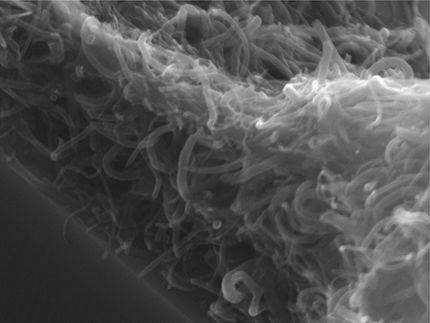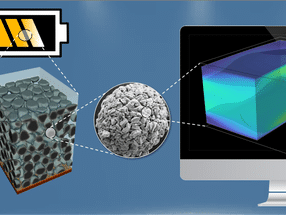Scientists Produce Long, Hair-Like Nanotubes
Breakthrough reported this week in Science
08-May-2002
TROY, N.Y. - For the first time, researchers have created a simplified method for making long, continuous, hair-like strands of carbon nanotubes that are as much as eight inches in length. This breakthrough, reported in the May 3 issue of Science, is a first step toward creating such products as microcables for electrical devices or mechanically robust electrochemical actuators for artificial muscles.
The researchers from Rensselaer Polytechnic Institute and collaborators at Tsinghua University in Beijing found that chemical vapor deposition (CVD), a widely used technique to grow nanotubes, has a high yield of long strands when a sulfur-containing compound and hydrogen are added to the process.
Researchers have previously created nanotube fibers with more complex methods, but because CVD is commonly used to make nanotubes, it would be easily adaptable and more efficient for synthesizing the long strands for practical applications.
This new method produced nanotubes that measured 20 centimeters, much longer than conventional nanotubes, said Pulickel Ajayan.
"carbon nanotubes are generally microns in length, which is not long enough for any practical purpose," said Ajayan, associate professor of materials science at Rensselaer Polytechnic Institute in Troy, N.Y. "We have created strands with nearly aligned nanotubes that are as long as 20 centimeters. The nanotubes are well ordered in these structures and are self-assembled during the growth process, which means we don't end up with an unusable lump that looks like cooked spaghetti," he added.
The process could also be an easier alternative to creating high-purity single-walled nanotube material in general, said Bingqing Wei, a post doctoral associate of Ajayan's who came to Rensselaer from Tsinghua University.
Most read news
Topics
Other news from the department science

Get the chemical industry in your inbox
From now on, don't miss a thing: Our newsletter for the chemical industry, analytics, lab technology and process engineering brings you up to date every Tuesday and Thursday. The latest industry news, product highlights and innovations - compact and easy to understand in your inbox. Researched by us so you don't have to.



























































